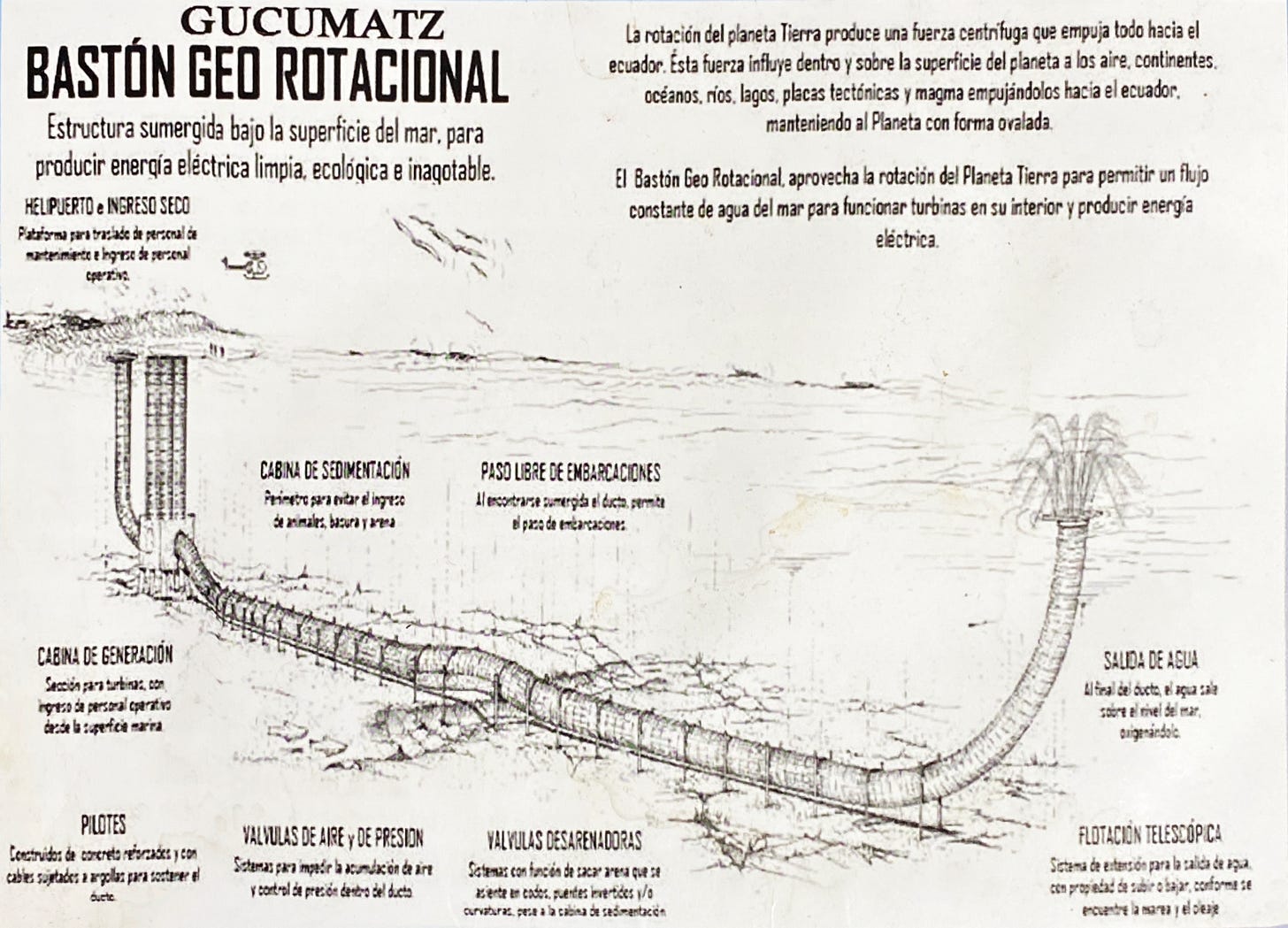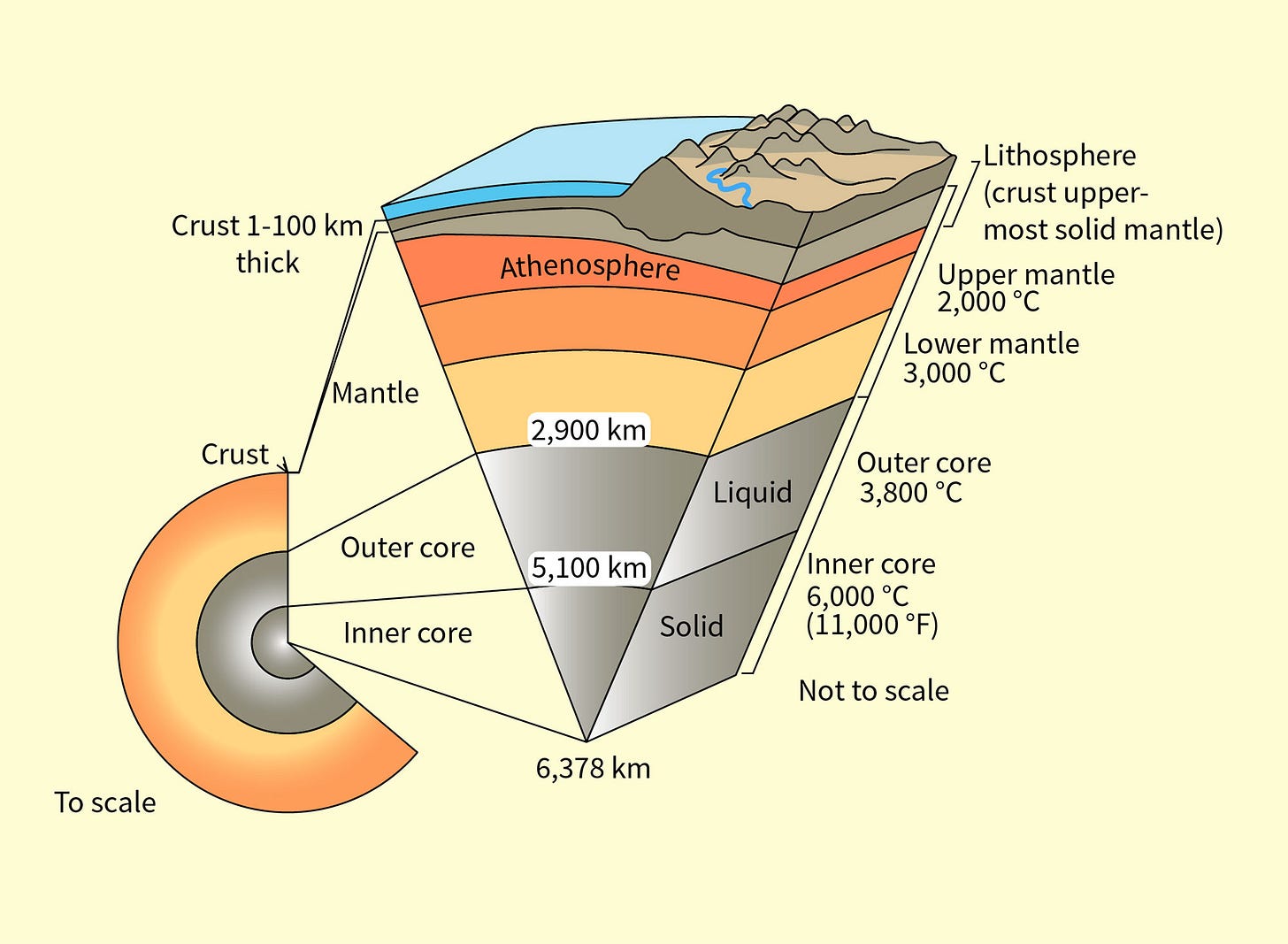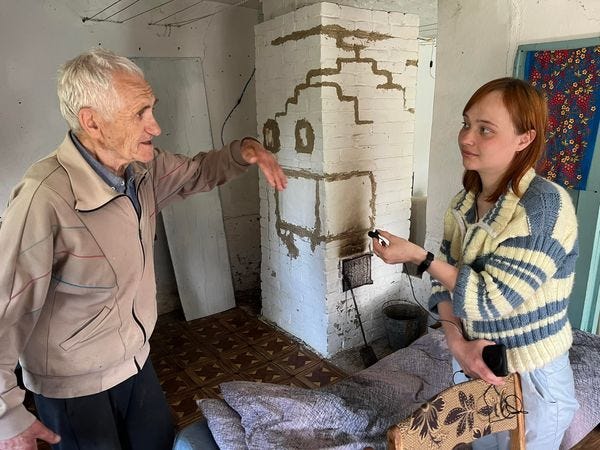Four months ago I posted Foggy Forecasts for Clean Energy Futures that peered down the dark well of climate change diagnoses and concluded:
Most of the predictions push us up to somewhere between two and three degrees of warming where it would no longer be possible to maintain global civilization as we know it today, and the worst take us above 5 degrees and human extinction by the end of the century. Ninety-five percent of humanity is completely unaware of this … if you mention climate change to the average person on the street in China, India, Thailand, Latin America, or Africa, it is likely you will just get a blank stare.
What most people do see is all of the windmills and solar electric arrays popping up across the landscape like California mountain poppies after rain. Having been indoctrinated for decades that solar cells are too expensive and windmills kill birds, people are suddenly finding themselves bereft of Tucker Carlson. In the urgency wrought of wildfire, floods and superstorms, expensive and lethal coal and nuclear plants, the darlings of the Right, are giving way to safe, green energy.
Also in that Foggy Forecasts essay, and in the one that followed, I asked the musical question, “Can we build out renewable energy fast enough to avoid some nasty tipping points?” An ancillary question is whether renewables can scale to the point where they can achieve the development goals for 8 billion people, or whether some contraction of consumer civilization is inevitable.
As we watch aghast the sudden conflict between warlords in Sudan—a nation larger in size than France, Spain, Sweden, and Germany combined—it is difficult to imagine daily temperatures of 43C or 109F did not play a role in “rapid unexpected disassembly,” to borrow a term from SpaceX.
These events should be focusing attention. It is difficult to explain why denialism still holds sway in so many chambers of government. In the US Congress, Republicans plus Joe Manchin are proposing to repeal the Biden Administration’s billion-dollar IRA climate bill and are holding up the billion-dollar 2023-4 farm bill with climate change funding at its core. Their polls show that running against climate change is a winning path to public office, so why not just criminalize climate change the same as we do with addiction or mental illness and be done with it? Why spend money to treat it?
In these posts, I often try to shine a light on the downsides of technological solutions to climate change. They are too expensive, wealth-disequilibriating, and energy-and-nonrenewables intensive. I’ve offered instead simpler, less costly, natural solutions like tree-planting, agroforestry, soil and reef regeneration, or coastal kelp forests—literally the low-hanging fruit. Still, energy is important if the challenge is to sustain some modicum of civilization as we transition from “sustaining” a consumer economy to an ecosystem-regenerative paradigm.
Energy from Spin
Three promising large-scale “natural” energy sources can help. All of these employ aikido—redirecting a force coming at you to your advantage rather than opposing it with equal force. These newer techs bend gigantic, cosmic forces—Earth’s spin, Earth’s heat, and subtle differences in temperature or gravity.
Many years ago at a conference in México, I met a Guatemalan engineer who wanted to raise 80 million quetzals to lay pipe from mountains down and into the ocean over a distance of 364,000 feet (69 miles) and a drop of 7,280 feet (1:50 slope). He had noticed that the waters on the planet have different speeds over distance depending on how far they are from Earth’s central axis. His idea was to channel water into a large pipe at 45°N and exit it at 46°N. Using only the rotational energy of the Earth, the same that powers cyclones and hurricanes, and deducting losses from friction and pump energy (9.6 GWe), he estimated he could produce the equivalent of 48 large nuclear plants—48 GWe—from any pipe having an internal diameter of 25 meters.
In a simplified way, it can be said that if we pass a mass of water from a geographical point of higher speed to a geographical point of lower speed through a pipeline with turbine-generators, we can produce abundant and unlimited electrical energy.
— Fradique Lee Duarte, Energia Geo Rotational
I doubt he got funded or we likely would be hearing racy stories about the exploits of the Guatemalan superrich.
Ubiquitous Geothermal
A second new tech employs the heat that Earth has been exhausting to space ever since it was a molten blob of star magma, then hardening into an iron rock orbiting its mother star. The temperature in the inner core remains about 5,200° Celsius (9,392° Fahrenheit)—about the surface of the Sun. Just the decay of the radioactive stardust in the core produces a continuous 30 terawatts of energy. You only have to go down a few miles to reach 1000°C.
Four years after graduating college, Christopher Cheng appeared on the Canadian reality TV show Dragons' Den and pitched Holiday Rejects Apparel, winning over three dragon investors and making his first fortune. Six years later, in 2018, he married his newer Full Circle Energy to Canuc Resources Corporation (TSX-V: CDA), where he is currently a member of the latter oil giant’s board. While working in their tar sands, he tested conductive heating from a reservoir in Northeast Alberta and stumbled onto something Nicola Tesla had predicted but never proved.
Conventional geothermal is usually beset by several impediments. Normally, massive amounts of water are pumped deep, brought to a boil underground, and the steam comes up, off-gassing everything in it, including some nasty pollutants. While it is abundant in Iceland, in the USA, geothermal electricity is mostly located in California, Nevada, Hawaii, and Alaska, where tectonic plates are grinding beneath the surface. Those plants rely on high-quality hydrothermal resources that are difficult to standardize and scale. Most of the big, well-explored, well-characterized fields have been tapped out, and as the resource gets deeper the rock becomes hotter and less porous, and the engineering difficulty rises.
Since all Eavor needs to work is hot rock, which is pretty reliably located beneath almost any site in the world, it avoids the need for expensive exploration and modeling.
Advanced geothermal systems (AGS) refers to a new generation of “closed loop” systems, in which no fluids are introduced to or extracted from the Earth and there’s no fracking. Cheng’s system, called an Eavor-Loop, uses two vertical wells around 1.5 miles apart connected by a horizontally arrayed series of lateral tunnels, in a kind of radiator design, to maximize surface area and soak up as much heat as possible. Because the loop is closed, cool water on one side sinks while hot water on the other side rises, creating a “thermosiphon” effect that circulates the water naturally, with no need for a pump. Without the parasitic load of a pump, Eavor can make profitable use of relatively low heat, around 150°C, available almost anywhere about a mile and a half down.
An Icelandic Ecovillage
Twenty years ago, on a trip to Iceland, I visited the world’s oldest continuously operating ecovillage, Sólheimar (place of the sun), founded by Sesselja Sigmondsdottir in 1933. They had some lovely old Jacobs wood-bladed wind generators but most of their power was geothermal. Just inside the entrance to their community center, I saw a metal box on the wall not much larger than a shoe box. It powered the whole building on the temperature difference between the warmth of their hot spring and the cold outdoors, using an array of bimetallic strips that expanded or contracted in response to temperature, generating an electrical current on that differential. In the Icelandic winter, Sólheimar has so much excess energy that they conduct steam under the sidewalks so they don’t have to shovel snow.
In this image, we can see the constant temperature of the Earth at a depth of 10 km. There is nowhere in the continental USA without sufficient geothermal energy to power all human industry above ground. The question not asked as often as it should be is whether that is a good thing.
The Paradox
Is it not a dangerous idea to give hairless apes who have demonstrated little regard for, or any duties or responsibilities towards, the web of life, now with a gradually shrinking brain size atrophied by comforts gained at the expense of all other lifeforms, unlimited energy? Can we even imagine the ever-greater harm such a boon might bring?
Larger questions loom. Are there in fact limits to this unlimited energy? In Iceland, a number of geothermal power stations have been phased out after decades of use because they lowered the temperature of the deep rock enough to make pumping more water into the formation impractical.
If enough of my Guatemalan friend’s pipes were laid across lines of latitude worldwide, might that not slow the spin of the planet? While New Yorkers or Londoners might appreciate a longer minute, it is not necessarily a benefit to alter the speed of deep ocean currents or the diurnal cycles of birds and insects. We aren’t there yet, but we need to ask ourselves whether megascale projects are really aikido, or whether they are just more hubris disguised as green energy.
The problem, in the final analysis, is not a deficit of energy. It is a deficit of wisdom.
Meanwhile, let’s end this war. Towns, villages, and cities in Ukraine are being bombed every day. Ecovillages and permaculture farms have organized something like an underground railroad to shelter families fleeing the cities, either on a long-term basis or temporarily, as people wait for the best moments to cross the border to a safer place, or to return to their homes if that becomes possible. There are 70 sites in Ukraine and 500 around the region. As you read this, we are sheltering some 2,000 adults and 450 children. We call our project “The Green Road.” With public donations from people like yourself,
88 houses were restored
33 wells were restored
32 wood heating stoves in houses were restored
water was supplied to 34 houses
5008 euros were spent on gardens, orchards, and animals
17,448 euros were spent on food
19,045.70 euros went to household and kitchen items
12,558.80 euros provided schoolbooks, musical instruments and hand tools.
The Green Road wishes to thank
GEN Europe (@Riccardo Clemente Robert Hall).
Landsforeningen for Økosamfund and CISU - Civilsamfund i Udvikling / Civil Society in Development (Denmark) Camilla Nielsen-Englyst
German Ukrainian Co-operation in Organic Agriculture (Stefan Dreesmann)
Visegrad and Beyond Permaculture Partnership
Global Village Institute for Appropriate Technology (Albert Bates)
Gas Up Ukraine Canada (Vad Segal)
The Mission Bambini Foundation (Mission Bambini )
For most of the children refugees, this will be their first experience in ecovillage living. They will directly experience its wonders, skills, and safety. They may never want to go back. Those that do will carry the seeds within them of the better world they glimpsed through the eyes of a child.
Those wishing to make a tax-deductible gift can do so through Global Village Institute by going to http://PayPal.me/greenroad2022 or by directing donations to greenroad@thefarm.org.
There is more info on the Global Village Institute website at https://www.gvix.org/greenroad or read this recent article in Mother Jones. Thank you for your help.
The COVID-19 pandemic destroyed lives, livelihoods, and economies. But it has not slowed climate change, a juggernaut threat to all life, humans included. We had a trial run at emergency problem-solving on a global scale with COVID — and we failed. 6.87 million people, and counting, have died. We ignored well-laid plans to isolate and contact trace early cases; overloaded our ICUs; parked morgue trucks on the streets; incinerated bodies until the smoke obscured our cities as much as the raging wildfires. The modern world took a masterclass in how abysmally, unbelievably, shockingly bad we could fail, despite our amazing science, vast wealth, and singular talents as a species.
Having failed so dramatically, so convincingly, with such breathtaking ineptitude, do we imagine we will now do better with climate? Having demonstrated such extreme disorientation in the face of a few simple strands of RNA, do we imagine we can call upon some magic power that will change all that for planetary-ecosystem-destroying climate change?
As the world emerges into pandemic recovery (maybe), there is growing recognition that we must learn to do better. We must chart a pathway to a new carbon economy that goes beyond zero emissions and runs the industrial carbon cycle backward — taking CO2 from the atmosphere and ocean, turning it into coal and oil, and burying it in the ground. The triple bottom line of this new economy is antifragility, regeneration, and resilience. We must lead by good examples; carrots, not sticks; ecovillages, not carbon indulgences. We must attract a broad swath of people to this work by honoring it, rewarding it, and making it fun. That is our challenge now.
Help me get my blog posted every week. All Patreon donations and Blogger or Substack subscriptions are needed and welcomed. You are how we make this happen. Your contributions are being made to Global Village Institute, a tax-deductible 501(c)(3) charity. PowerUp! donors on Patreon get an autographed book off each first press run. Please help if you can.
#RestorationGeneration
Thank you for reading The Great Change.











